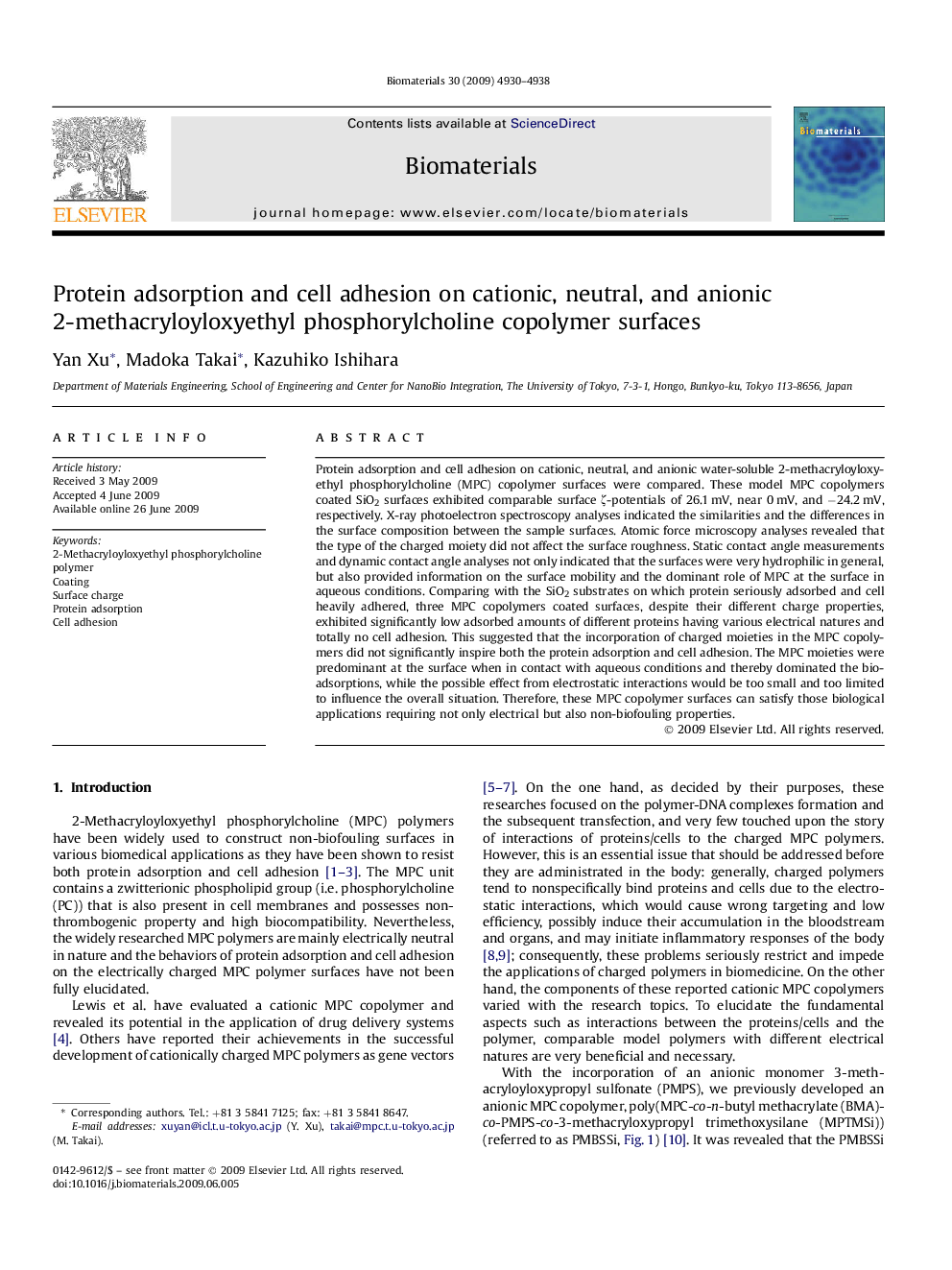| کد مقاله | کد نشریه | سال انتشار | مقاله انگلیسی | نسخه تمام متن |
|---|---|---|---|---|
| 9027 | 615 | 2009 | 9 صفحه PDF | دانلود رایگان |

Protein adsorption and cell adhesion on cationic, neutral, and anionic water-soluble 2-methacryloyloxyethyl phosphorylcholine (MPC) copolymer surfaces were compared. These model MPC copolymers coated SiO2 surfaces exhibited comparable surface ζ-potentials of 26.1 mV, near 0 mV, and −24.2 mV, respectively. X-ray photoelectron spectroscopy analyses indicated the similarities and the differences in the surface composition between the sample surfaces. Atomic force microscopy analyses revealed that the type of the charged moiety did not affect the surface roughness. Static contact angle measurements and dynamic contact angle analyses not only indicated that the surfaces were very hydrophilic in general, but also provided information on the surface mobility and the dominant role of MPC at the surface in aqueous conditions. Comparing with the SiO2 substrates on which protein seriously adsorbed and cell heavily adhered, three MPC copolymers coated surfaces, despite their different charge properties, exhibited significantly low adsorbed amounts of different proteins having various electrical natures and totally no cell adhesion. This suggested that the incorporation of charged moieties in the MPC copolymers did not significantly inspire both the protein adsorption and cell adhesion. The MPC moieties were predominant at the surface when in contact with aqueous conditions and thereby dominated the bio-adsorptions, while the possible effect from electrostatic interactions would be too small and too limited to influence the overall situation. Therefore, these MPC copolymer surfaces can satisfy those biological applications requiring not only electrical but also non-biofouling properties.
Journal: Biomaterials - Volume 30, Issue 28, October 2009, Pages 4930–4938